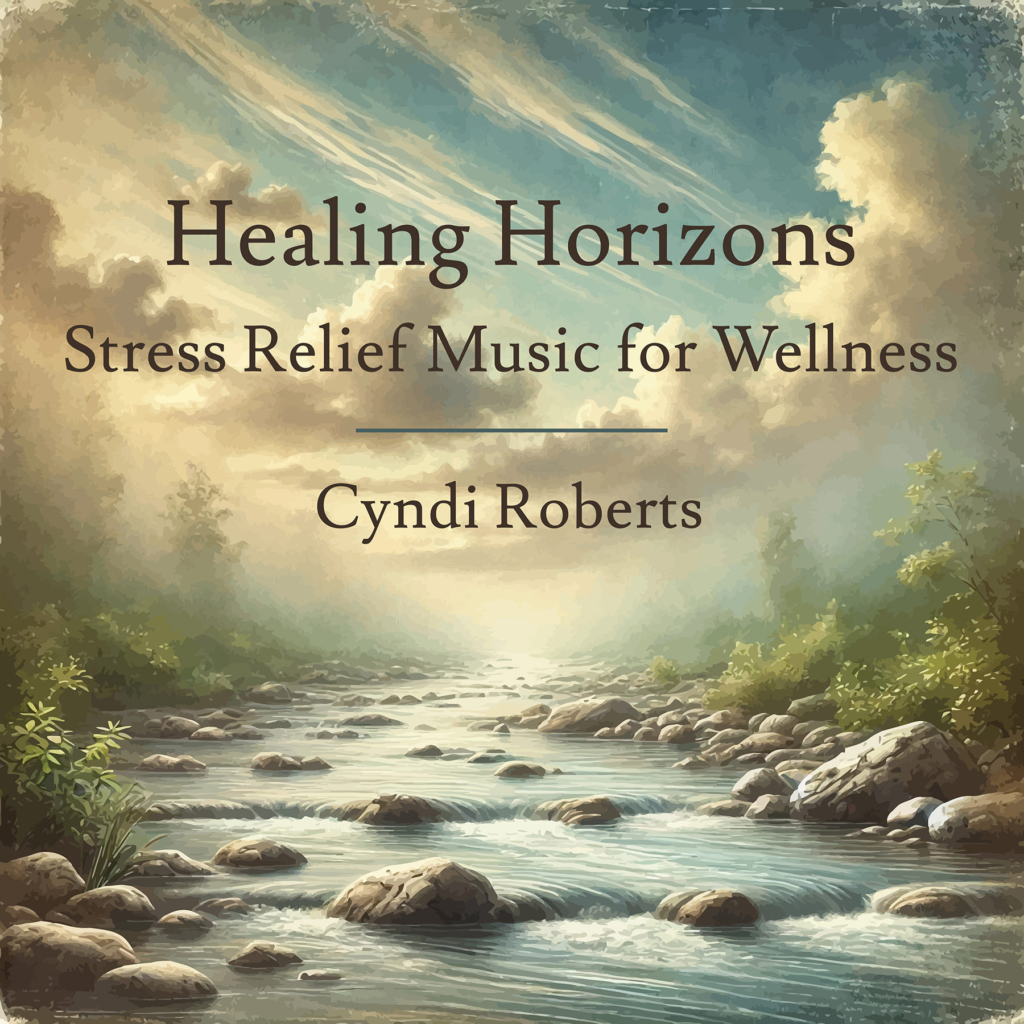Tracklisting
- “Aurora Dreams” – Ethereal and uplifting tones inspired by the beauty of the aurora.
- “Twilight Whisper” – A tranquil, ambient track perfect for winding down at the end of the day.
- “Zen Drift” – Minimalistic and peaceful, perfect for moments of stillness and reflection.
- “Nature’s Lullaby” – A calming blend of natural ambient sounds and soft melodies.
- “Harmonic Balance” – A stress-relief composition with warm, resonant tones.
- “Winds of Serenity” – Relaxing instrumental harmonies blended with gentle, airy sounds.
- “Tranquil Reflections” – A meditative track featuring serene, flowing sounds to encourage mindfulness.
- “Gentle Awakening” – A soothing introduction with soft tones and light ambient layers.
- “Radiant Calm” – Stress-relief music infused with uplifting tones to restore inner balance.
- “Ebb and Flow” – A stress relief track featuring soft, rhythmic sounds of universal change.
- “Healing Light” – A warm, radiant track evoking a sense of hope and restoration.
- “Echoes of Ease” – Gentle reverberations and ambient textures for mental clarity and relaxation.
Health Affirmations
These health affirmations were created for one of my clients that was in the ICU with Covid-19. Her nurse played them for her, so she could focus her mind toward well-being and healing. They were recorded in my backyard, with birds singing and with my clients’ health in mind.
I share them with you and other clients facing grave or chronic physical, mental, emotional and spiritual health issues. I invite you to listen to them with health in mind. Take a break from focusing on the discomfort so you may invite in healing.
Postural Breathing Exercise
The purpose of this exercise is to get you to become aware of your posture and its effect on your breath. By feeling the position of the body, you can get more acquainted with how your breath naturally flows and areas where you may feel restriction. Opening those places of restriction eases tension in the body, which allows for deeper breaths. Deeper breaths turn off stress mode and enable the relaxation response in the body, which is where healing occurs.
Tense & Release Breath
Most of us are unaware that we are carrying tension in certain areas of the body. This chronic state of muscular tension tends to gets tighter when we are faced with stressful situations. This exercise is meant to bring awareness to those hidden areas of tension. It is then, in the light of that awareness that the tension we carry will dissolve.
We will simply exaggerate the tension, by clenching certain areas of the body and then release it. After the tension is released, the body will naturally develop a new muscle memory to release and let go, rather than holding on and tightening. It will also help you become aware of what tight muscles feel like and what relaxed muscles feel like.
In the future, when you feel stress coming on, you can connect to tension in certain areas of the body. You’ll begin to notice the correlation between that tension and the stress you’re feeling. Once you notice, you can let go, compassionately inviting muscles to soften. The more you practice, the more memory will develop.
The purpose of this exercise is to get you to notice your breathing and expand shallow breaths. Expanding the breath turns the parasympathetic nervous system back on. That’s the system responsible for relaxation, which counters stress and anxiety. This exercise brings awareness to the muscles used for breathing as you tune inward. The breath has such power to calm and heal and this exercise can help with that connection.
Three Part Breath
The three-part yogic breath, also known as Durga breath, helps us connect to the different parts of the lungs and to deepen our awareness of the breathing cycle. This full breath also strengthens and engages the entire capacity of the breath. With each inhale, this expansive breath brings more oxygen into the lungs and bloodstream, improving circulation for all the cells of the body. With each exhale, we release stagnation; toxins and pollution trapped in the lower lobes of the lungs. There is a cleansing and purifying effect that takes place with each breath as stress levels are reduced.
Even Breath Count
The purpose of this exercise is to slow down and even out the breath. This slowing and evening of the breath switches the parasympathetic nervous system back on. As the breath deepens and slows, the mind quiets and the body is brought back into balance. Even breaths not only reduce stress by calming the nervous system, they also increase a sense of ease, focus, well-being and clarity in the mind-body connection. Additionally, counting the breath—much like using a mantra—helps focus the mind, taking the attention off negativity, worries and anxieties. This exercise can be helpful when trying to fall asleep or to take the focus away from intense thoughts that may be distracting you.
Ten Count Breath
The ten count breathing practice is a perfect way to help focus the mind. When you feel as though the mind is running wild or there is a particular worry or fear you find yourself replaying, this count is perfect to shift the focus away from those thoughts. It’s an extremely powerful way to improve concentration. Paired with deep breaths, this is a mindfulness practice that encourages the body’s relaxation response to turn on, easing anxiety or upset.
Practicing this as instructed once daily is a way to ease into a regular meditation practice. Focusing on the count gently guides the awareness away from thoughts and distractions.
This exercise is great to practice throughout the day to receive more benefit, especially when feeling overworked, overwhelmed or stressed. You could take seemingly mundane tasks and turn them into meditations. Examples include: while washing dishes, waiting in line at the store, sitting in traffic (eyes open, of course!)








